Abstract
Ten human/mouse hybrid cell lines that segregate either human or mouse chromosomes were examined for the expression of human- and mouse-specific histones H1 and H2B. Results of this study indicate that the human and mouse chromosomes in hybrid cells that segregate human chromosomes (M greater than H hybrids) contain only mouse histone H1 and H2B. Chromosomes in hybrid cells that segregate mouse chromosomes (H greater than M hybrids) contain only human H1 and H2B histones. Loss of the ability to produce either human or mouse histones does not seem to be due to the loss of specific human or mouse chromosomes because M greater than H hybrids retaining at least one copy of each human chromosome contain only mouse H1 and H2B and H greater than M hybrids retaining at least one copy of each mouse chromosome contain only human H1 and H2B histones. These results, together with those concerning histone H4 acetylation levels and ratios of variants of histones H3 and H2A that are like those in the dominant parent cell type, indicate that the control mechanisms affecting H1 and H2B expression in H greater than M and in M greater than H hybrid cells affect expression of histones H2A, H3, and H4 genes as well. The present data thus support the hypothesis that none of the histone genes that are active in the recessive parent cell type is expressed in hybrid lines that segregate recessive cell chromosomes.
Full text
PDF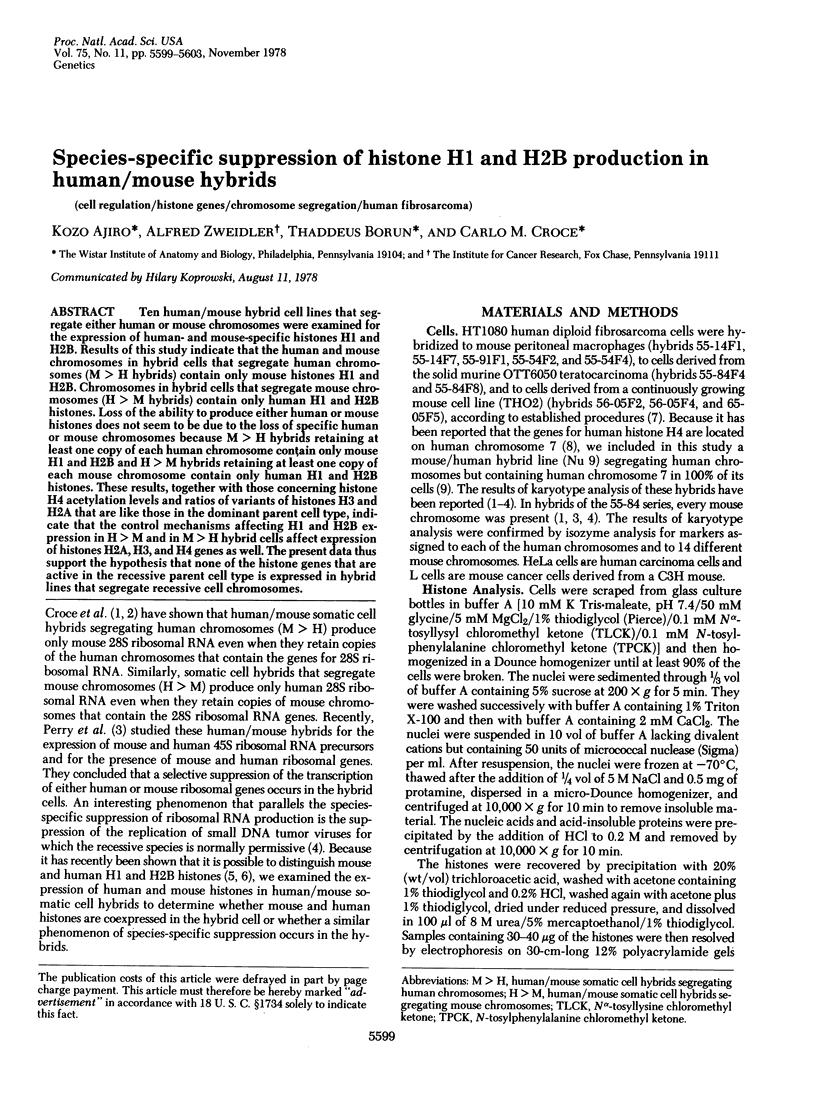
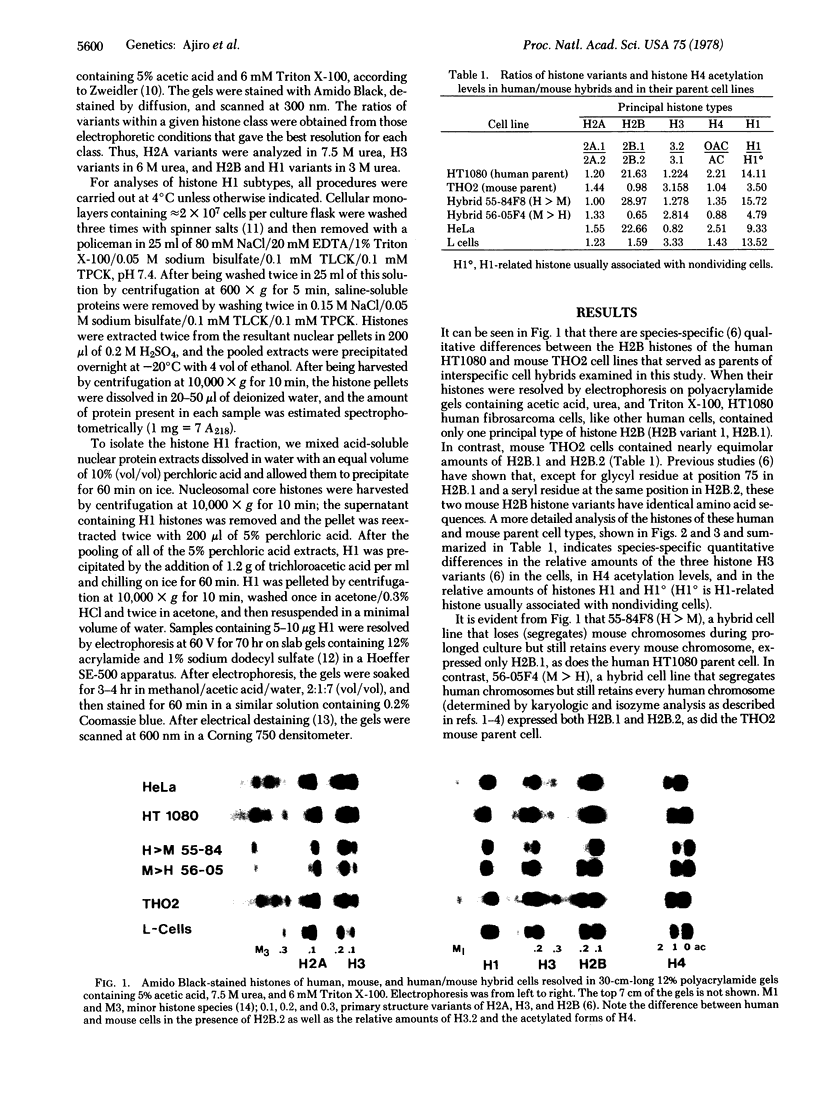
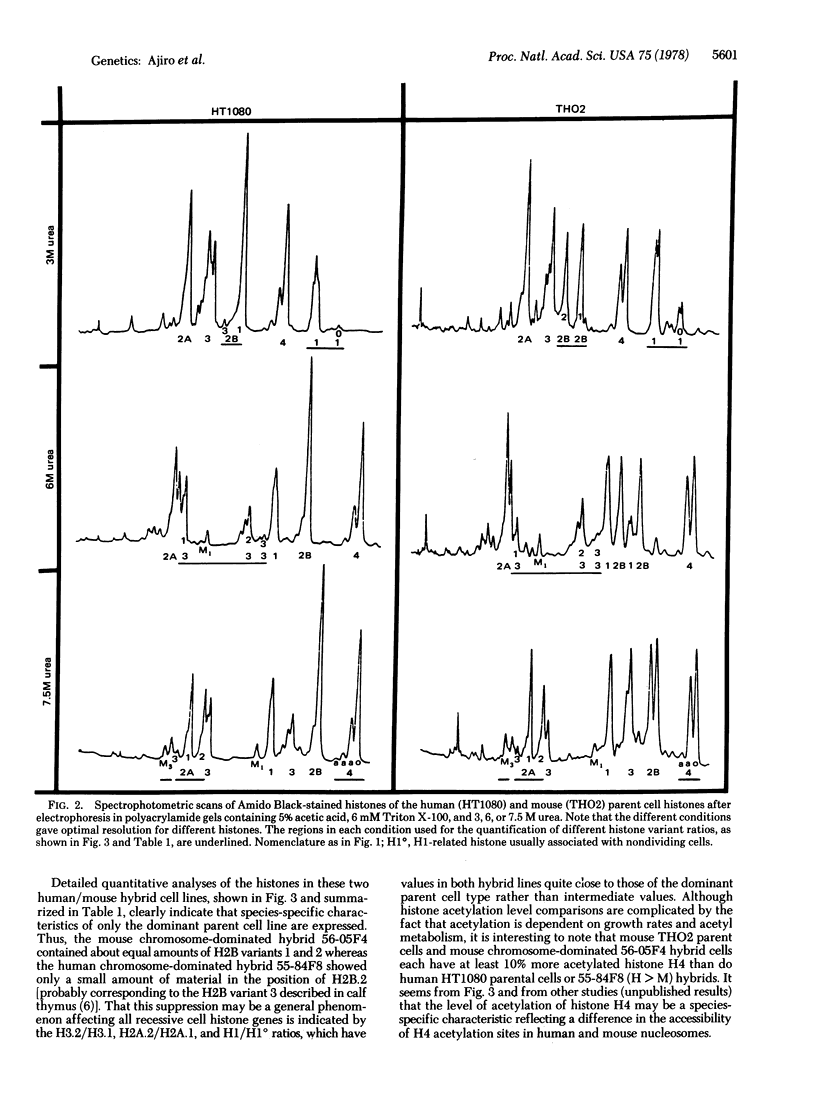
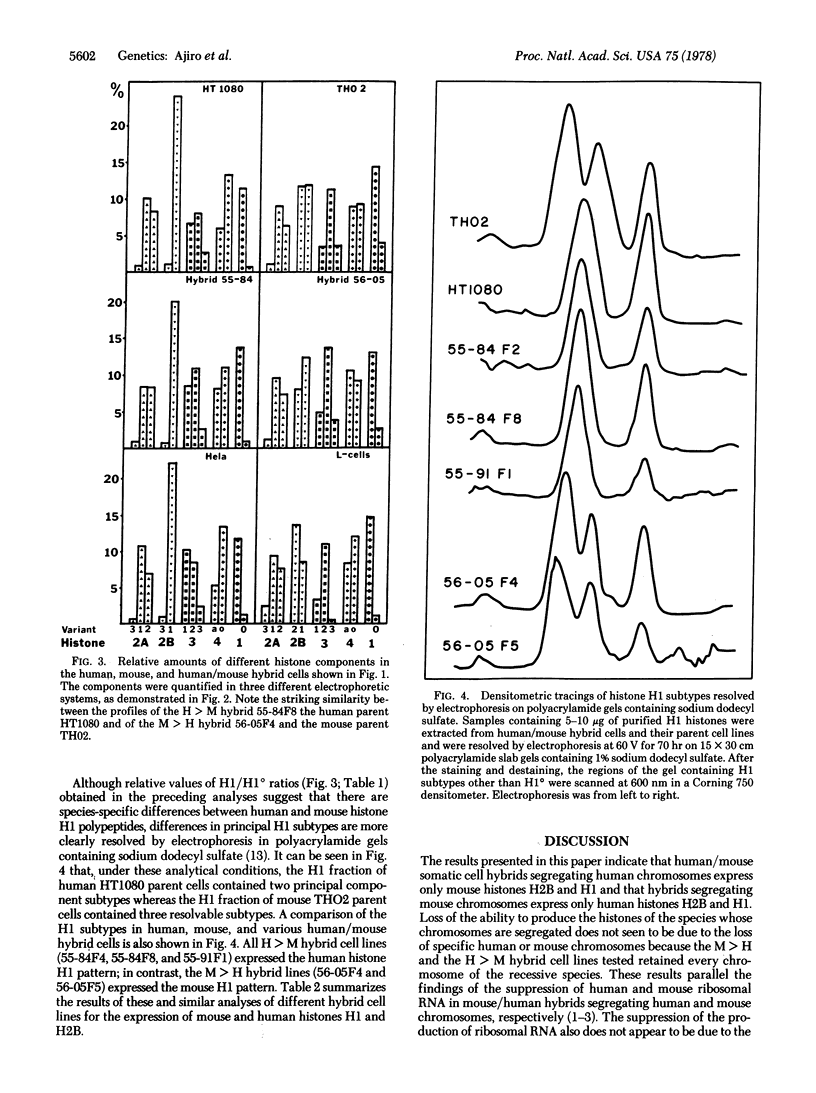
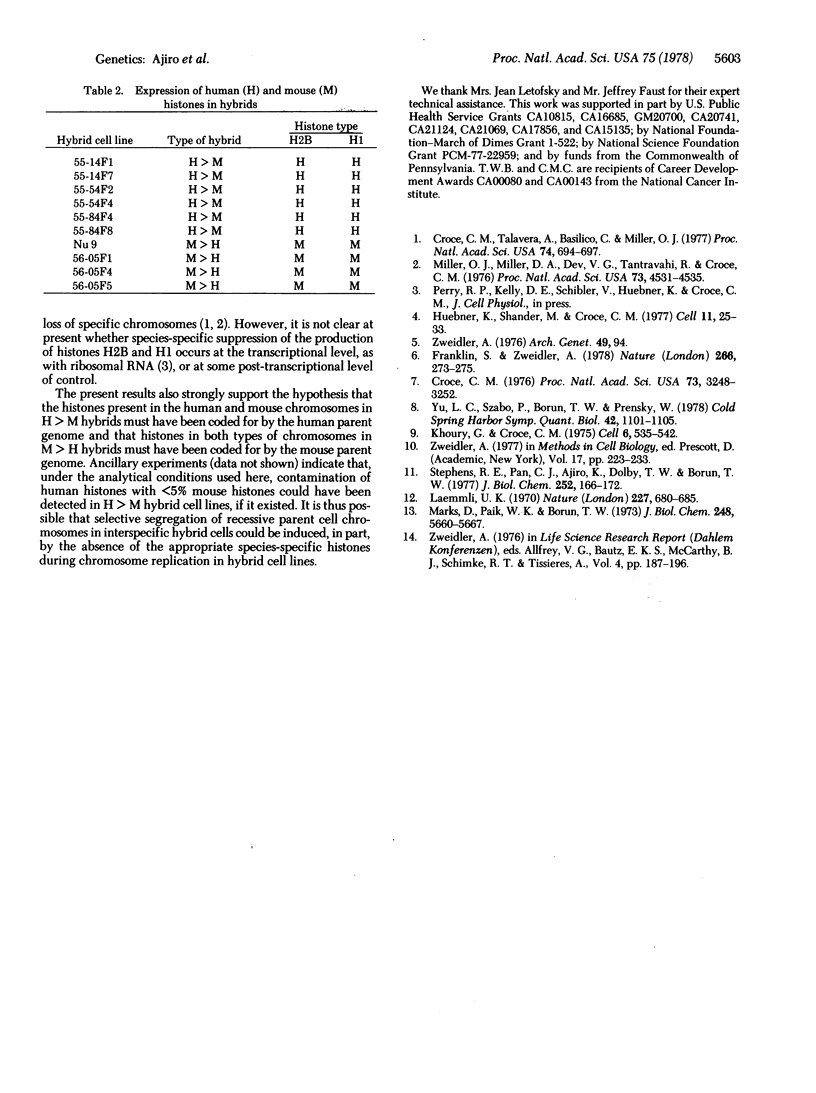
Images in this article
Selected References
These references are in PubMed. This may not be the complete list of references from this article.
- Croce C. M. Loss of mouse chromosomes in somatic cell hybrids between HT-1080 human fibrosarcoma cells and mouse peritioneal macrophages. Proc Natl Acad Sci U S A. 1976 Sep;73(9):3248–3252. doi: 10.1073/pnas.73.9.3248. [DOI] [PMC free article] [PubMed] [Google Scholar]
- Croce C. M., Talavera A., Basilico C., Miller O. J. Suppression of production of mouse 28S ribosomal RNA in mouse-human hybrids segregating mouse chromosomes. Proc Natl Acad Sci U S A. 1977 Feb;74(2):694–697. doi: 10.1073/pnas.74.2.694. [DOI] [PMC free article] [PubMed] [Google Scholar]
- Franklin S. G., Zweidler A. Non-allelic variants of histones 2a, 2b and 3 in mammals. Nature. 1977 Mar 17;266(5599):273–275. doi: 10.1038/266273a0. [DOI] [PubMed] [Google Scholar]
- Huebner K., Shander M., Croce C. M. Suppression of replication of SV40 and polyoma virus in mouse-human hybrids. Cell. 1977 May;11(1):25–33. doi: 10.1016/0092-8674(77)90314-2. [DOI] [PubMed] [Google Scholar]
- Laemmli U. K. Cleavage of structural proteins during the assembly of the head of bacteriophage T4. Nature. 1970 Aug 15;227(5259):680–685. doi: 10.1038/227680a0. [DOI] [PubMed] [Google Scholar]
- Marks D. B., Paik W. K., Borun T. W. The relationship of histone phosphorylation to deoxyribonucleci acid replication and mitosis during the HeLa S-3 cell cycle. J Biol Chem. 1973 Aug 25;248(16):5660–5667. [PubMed] [Google Scholar]
- Miller O. J., Miller D. A., Dev V. G., Tantravahi R., Croce C. M. Expression of human and suppression of mouse nucleolus organizer activity in mouse-human somatic cell hybrids. Proc Natl Acad Sci U S A. 1976 Dec;73(12):4531–4535. doi: 10.1073/pnas.73.12.4531. [DOI] [PMC free article] [PubMed] [Google Scholar]
- Stephens R. E., Pan C. J., Ajiro K., Dolby T. W., Borun T. W. Studies of human histone messenger RNA. I. Methods for the isolation and partial characterization of RNA fractions containing human histone message from HeLa S3 polyribosomes. J Biol Chem. 1977 Jan 10;252(1):166–172. [PubMed] [Google Scholar]
- Yu L. C., Szabo P., Borun T. W., Prensky W. The localization of the genes coding for histone H4 in human chromosomes. Cold Spring Harb Symp Quant Biol. 1978;42(Pt 2):1101–1105. doi: 10.1101/sqb.1978.042.01.111. [DOI] [PubMed] [Google Scholar]
- Zweidler A. Resolution of histones by polyacrylamide gel electrophoresis in presence of nonionic detergents. Methods Cell Biol. 1978;17:223–233. [PubMed] [Google Scholar]



